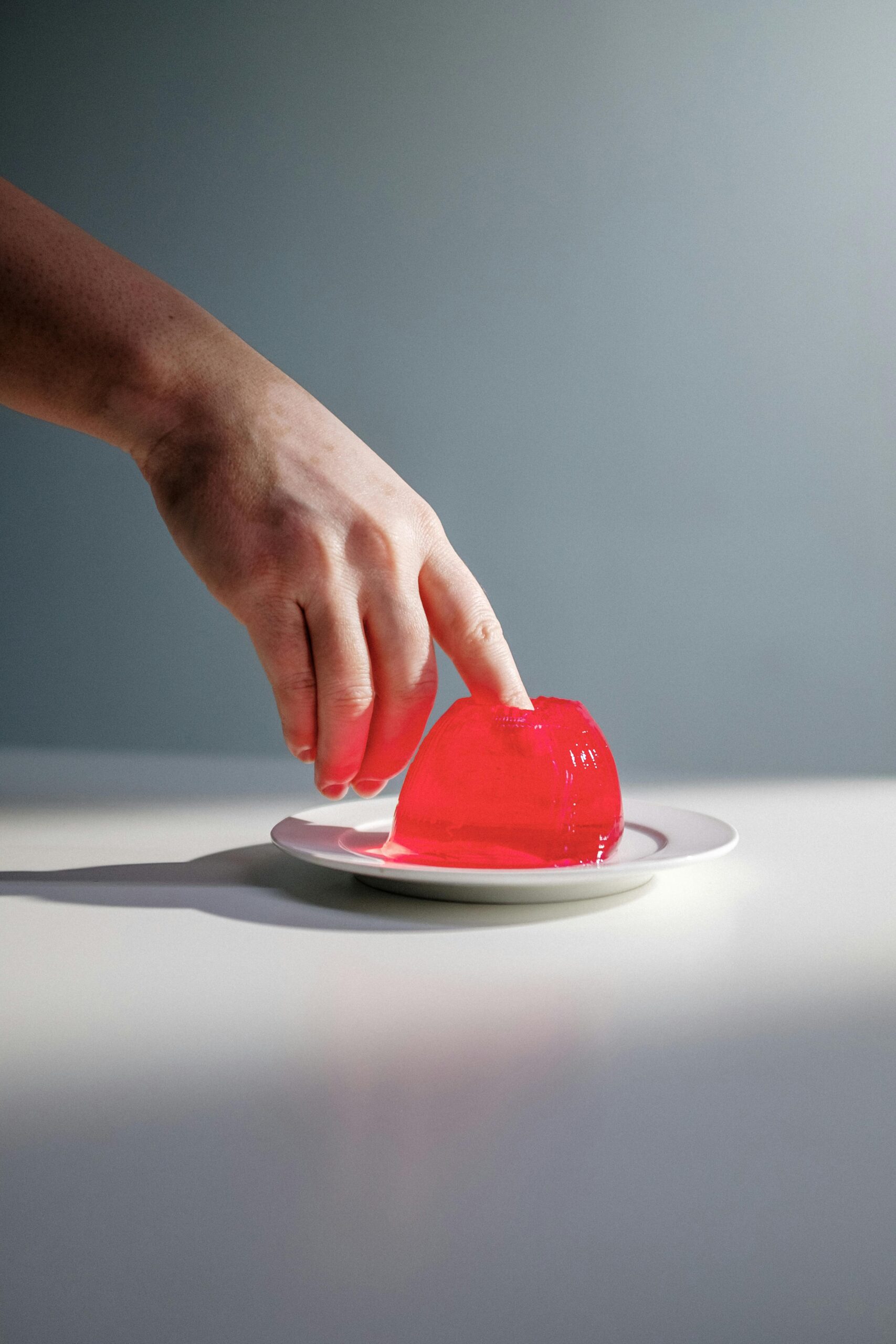The magic of gelatin lies in its protein structure. Gelatin molecules are long chains of amino acids which unravel into individual strands when heated in water. As the solution cools, these strands begin to form a three-dimensional network, trapping water molecules within and creating a gel.
This gelling process is influenced by several factors, including:
- Concentration: The amount of gelatin you use determines the firmness of the gel. A higher concentration results in a firmer texture, while a lower concentration creates a softer, more delicate gel.
- Temperature: Gelatin dissolves when heated to around 50-60°C (122-140°F) and solidifies when cooled below 15°C (59°F). This reversible process allows you to melt and reset gelatin-based desserts multiple times.
- Acidity: Highly acidic ingredients (like citrus juice) can weaken the gelling ability of gelatin by breaking down its protein structure. To counter this, you may need to adjust the gelatin concentration when working with acidic components.
- Enzymes: Certain fruits, like pineapple, kiwi, and papaya, contain enzymes (bromelain, actinidin, and papain) that break down proteins, preventing gelatin from setting. Using canned versions of these fruits or briefly cooking them can deactivate the enzymes and allow the gel to form.
Gelatin in Desserts
Gelatin’s versatility makes it an essential ingredient for a wide range of desserts. Here are a few popular applications:
- Jelly Desserts: From brightly colored fruit gels to elegant layered jellies, gelatin is the backbone of these playful treats. You can customize them with different flavors, colors, and shapes for any occasion.
- Panna Cotta: This creamy Italian dessert uses a small amount of gelatin to achieve its signature silky texture. It’s a perfect example of how gelatin can add structure without compromising a dessert’s delicate mouthfeel.
- Marshmallows: Gelatin gives marshmallows their unique bouncy texture by stabilizing air bubbles within the sugary matrix.
- Gummy Candies: Gelatin is the key ingredient in gummies, providing their chewy consistency and allowing for endless flavor combinations.
Tips for Working with Gelatin
If you’re new to using gelatin, here are some tips to ensure success:
- Bloom the Gelatin: Before adding gelatin to a recipe, it must be bloomed or hydrated. Sprinkle gelatin powder over cold water and let it sit for a few minutes until it swells. This step ensures the gelatin dissolves evenly when heated.
- Avoid Boiling: While heating gelatin is necessary to dissolve it, boiling can weaken its gelling power. Gently warm the mixture instead.
- Test the Set: Gelatin desserts need time to set in the refrigerator—usually 4-6 hours or overnight for firmer gels. Be patient and let the science work its magic.
- Experiment with Flavors and Add-ins: Gelatin can carry flavors beautifully, so feel free to experiment with fruit juices, extracts, or even edible flowers for visual appeal.
The Joy of Gelatin
Understanding the science behind gelatin not only helps you create perfect desserts but also sparks creativity in the kitchen. Whether you’re making a simple jelly or tackling an intricate gelatin art project, the process of transforming liquid into a solid never ceases to amaze.
So the next time you savor a gelatin dessert, take a moment to appreciate the chemistry that went into creating that delightful wobble. With a little knowledge and experimentation, you can master the art and science of gelatin-based treats—and maybe even invent a new dessert of your own!
Happy experimenting, and may your gelatin always jiggle just right!


Leave a Reply
You must be logged in to post a comment.